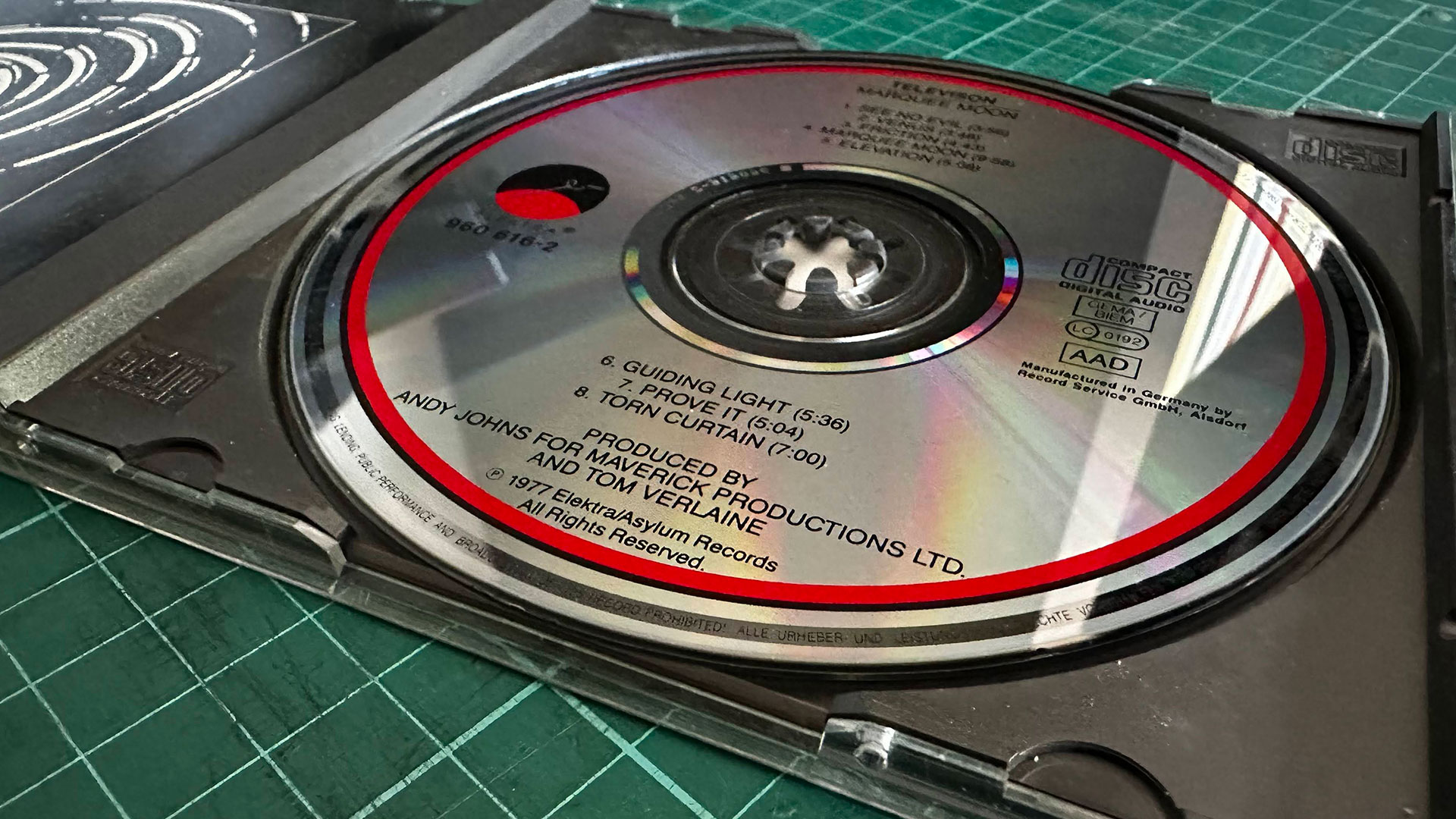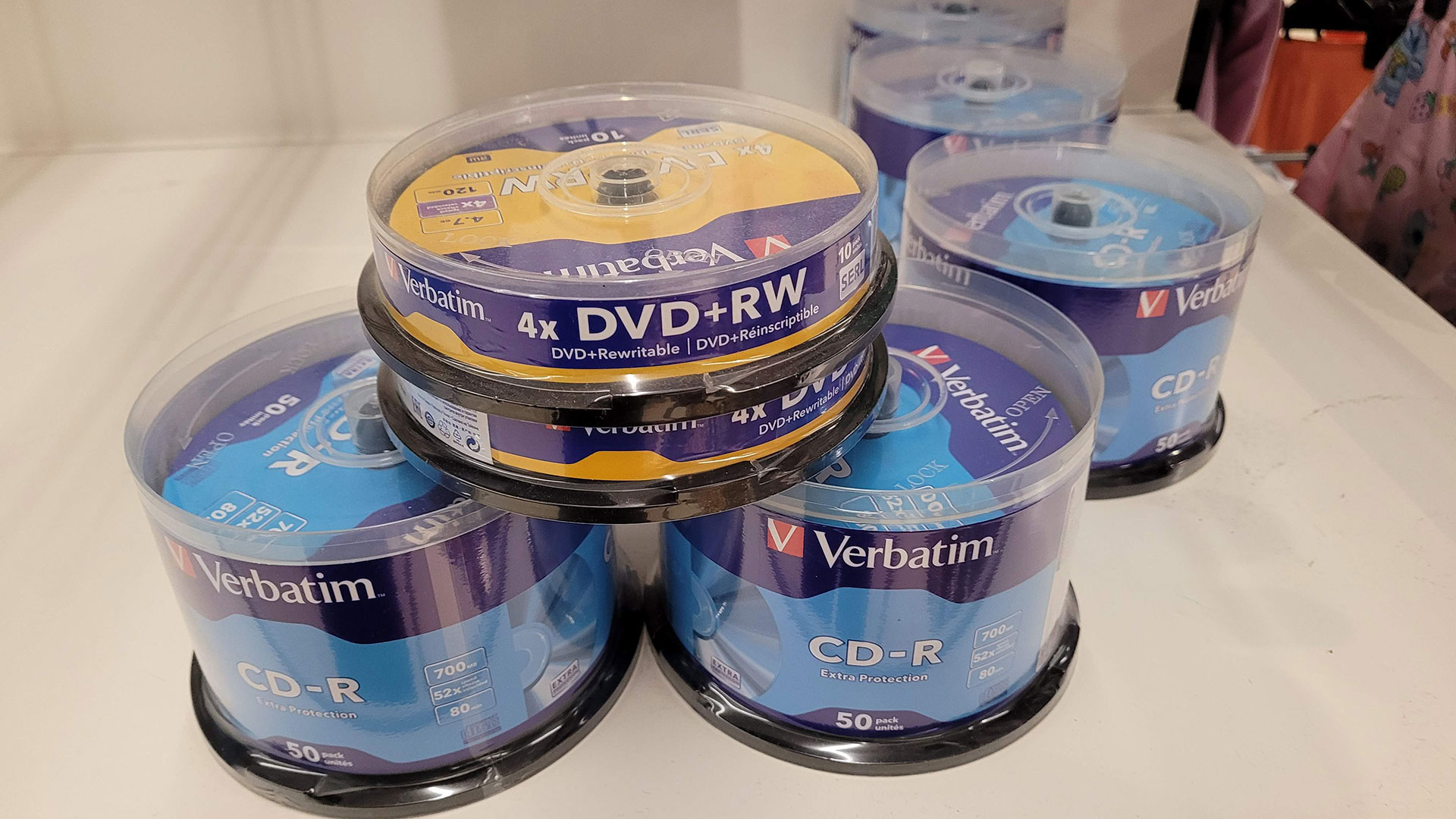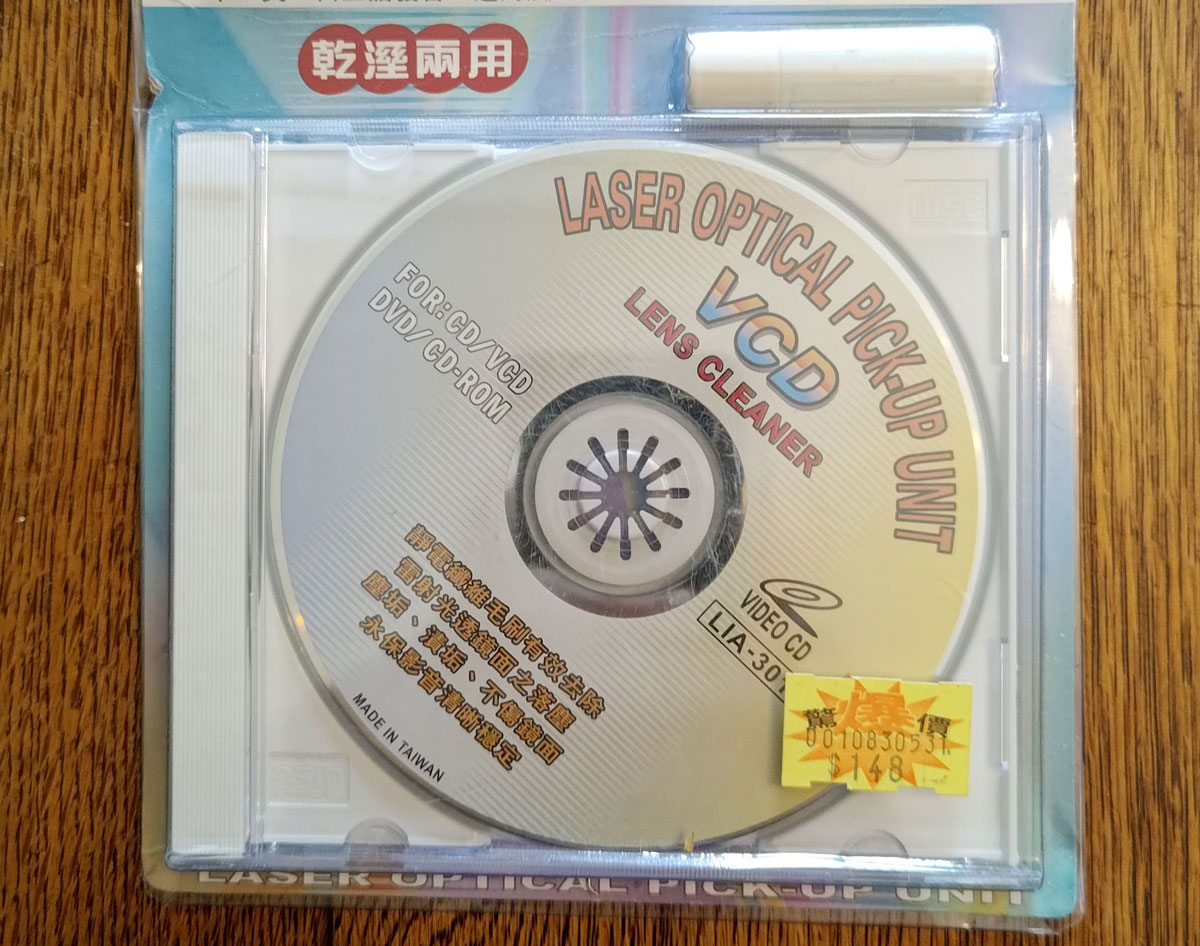The first commercial Compact Disc was created 43 years ago, today — nearly one billion CDs were shipped per year in early 2000's
CDs are still popular with some music fans, despite the rise of digital streaming platforms.

Today marks 43 years since the first commercial Compact Disc (CD) pressing. Polygram in Germany is credited with pressing the first copies of Abba's The Visitors on this date, back in 1982. The CD format would take off in a direction which would have been highly unexpected at the time, ending up as a foundation of the Multimedia PC age. However, CDs didn’t kill the audiophile thirst for vinyl, and, on the flip side, some artists are still releasing CDs, even in the 5G and fiber digital streaming age.
While the first commercial CDs were factory pressed some 43 years ago, the discs were in development for quite some time ahead of this date. According to various sources, Sony and Philips clubbed together in 1979 to create a digital music disc.
Beethoven’s influence?
Among the first prototype CDs, a format with an 11.5cm diameter which was capable of storing an hour of music was an early front-runner. Philips apparently had a production line ready for such silver coasters. However, the final 12cm diameter and 74 minutes capacity was apparently favored as it was sufficient for a complete recording of Beethoven's 9th Symphony - Sony president Norio Ohga’s favorite musical opus.
We must note that there are conflicting 74m CD audio origin stories, though. Another credits the desire for this particular uninterrupted audio duration to famed conductor Herbert von Karajan. Similarly, the Wilhelm Furtwängler’s 1951 recording of Beethoven's 9th (74 minutes long) is said to be the reason for this time target.
By June 1980, the CD audio Red Book standard was finalized. Abba’s The Visitors entered production in Aug 1982, though wouldn’t hit retail on its new fangled format until March 1983. Meanwhile, the first CD album released in the U.S. is thought to be Bruce Springsteen’s Born In The U.S.A., released in September 1984.
According to Statista, CD album sales peaked in the year 2000, with around 943 million sold in the U.S., alone. The format’s fall from grace has been pretty fast since then, but things have recovered a little since the 2020 low.
Computers and optical media
For computing enthusiasts, like us, the announcement of the CD Yellow Book standard is probably more important than the audio standard. This new standard, which would reach the market in 1985, added binary data to CD storage.
Get Tom's Hardware's best news and in-depth reviews, straight to your inbox.
Yet another significant change came in 1988, however. In this year, the ISO 9660 standard came into being, defining a file structure for CD-ROMs. CD burners, which created another huge ripple in the PC pond, began to first become available to the public in 1992. But it would take until the latter half of the 90s, when pricing, interfaces, and software began to democratize CDs as digital storage, archiving, and sharing essentials for everyone.
Reading about people using CDs with computers in 2025, as almost as archaic sounding as the use of floppy disks. Nevertheless, some music fans still prefer physical CDs to digital platforms (and the vinyl) such desires have probably spurred the likes of Taylor Swift to release almost 20 physical variations of her latest release, The Tortured Poets Department – including CDs, LPs, and even cassettes. If you count digital variants, there are 36 editions of this album you could buy.


I still maintain access to CDs and DVDs, and the ability to write various optical formats, using a simple external USB optical drive like this one from LG, at $27 on Amazon.com. There are plenty of cheaper, lesser known brand alternatives, too. It is great for looking through old archives and so on, as well as (re) ripping choices from the old music collection.
Follow Tom's Hardware on Google News to get our up-to-date news, analysis, and reviews in your feeds. Make sure to click the Follow button.

Mark Tyson is a news editor at Tom's Hardware. He enjoys covering the full breadth of PC tech; from business and semiconductor design to products approaching the edge of reason.
-
Exploding PSU I still love owning music and movies on discs, despite the availability of streaming. There's something... different about being able to "hold" the things I bought... It's like.. a fuller experience, if that makes sense?Reply -
thisisaname Reply
Yes it makes sense with streaming and other online services you never really own it like you do when you have a physical copy.Exploding PSU said:I still love owning music and movies on discs, despite the availability of streaming. There's something... different about being able to "hold" the things I bought... It's like.. a fuller experience, if that makes sense? -
voyteck Fun fact: everything below the Nyquist frequency (half of the sampling rate) is theoretically lossless (given high enough bit depth; and 16-bit is high enough in practical terms). For example, to faithfully record a 16Hz sinewave you need only (at least on paper) 32Hz sample rate, and low amplitudes (= quiet sounds) obviously don't require full bit depth. If hi-res sounds better, you can blame imperfect digital converters or... different mastering or... volume set (even just a tad) higher.Reply
So don't blame the format per se.
Of course, recording and mastering is a totally different matter. -
usertests Reply
Physical is kind of nice, but at the end of the day, it's just a different medium for storing digital data. As long as you control the data, you could make your own "disc", and it could be a microSD card.Exploding PSU said:I still love owning music and movies on discs, despite the availability of streaming. There's something... different about being able to "hold" the things I bought... It's like.. a fuller experience, if that makes sense?
CDs were amazing back in the 90s since it was the next step past 1.41 MiB floppies for most people (ignoring Zip disks), giving games up to 700 MiB per disc to work with.
The Blu-ray era was/is good because it is a source of high quality (when engineered correctly) video files, compared to the overly compressed video sent to devices by most streaming services. It's nice to hold it, but it's very nice to have high quality rips from it.
Even though digital distribution has taken over for everything, it was plausible that optical discs could have a future. Larger sizes such as 300 GB could have been commercialized for 8K video. Even larger sizes could become relevant as a competitor to HDDs for personal/bulk data storage. I'm talking about petabit-scale prototypes like this one. They haven't materialized, and that's the real tragedy. Production is winding down, and it looks like we won't see a new drive perfectly capable of reading all the discs that came before it. We are left with less options, less quality, and more reliance on spinning rust and gone-in-a-flash memory. Optical discs aren't infallible, but can probably last well over 50 years if using the right materials. -
TerryLaze Reply
People are sticking multi terabyte nvme drives into usb stick enclosures now....optical has no chance anymore.usertests said:Even though digital distribution has taken over for everything, it was plausible that optical discs could have a future. Larger sizes such as 300 GB could have been commercialized for 8K video. -
King_V ReplyMeanwhile, the first CD album released in the U.S. is thought to be Bruce Springsteen’s Born In The U.S.A., released in September 2024.
Might need a correction on that one. -
usertests Reply
There was movement towards an 8K UHD disc format for the Japanese market, and it would be technically trivial to adapt (the discontinued) Archival Disc and mandate the use of H.266 to store a lot of high quality 8K video in 300/500 GB (I don't believe the 1 TB Archival Disc was ever made). But the moment has long since passed, and I don't deny that.TerryLaze said:People are sticking multi terabyte nvme drives into usb stick enclosures now....optical has no chance anymore.
The only chance now for optical discs to make a comeback would be if one of the 100 TB and larger prototypes escaped the lab and could be manufactured and positioned as a cheaper alternative to HDDs. A 100 TB disc for $10-100 would blow past hard drives which are currently around $10 per terabyte. But it's all vaporware until proven otherwise, and the consumer progression of optical has been stopped. We would be lucky to see drives that are less than $10,000 for this hypothetical format. -
jg.millirem Replyusertests said:Physical is kind of nice, but at the end of the day, it's just a different medium for storing digital data. As long as you control the data, you could make your own "disc", and it could be a microSD card.
CDs were amazing back in the 90s since it was the next step past 1.41 MiB floppies for most people (ignoring Zip disks), giving games up to 700 MiB per disc to work with.
The Blu-ray era was/is good because it is a source of high quality (when engineered correctly) video files, compared to the overly compressed video sent to devices by most streaming services. It's nice to hold it, but it's very nice to have high quality rips from it.
Even though digital distribution has taken over for everything, it was plausible that optical discs could have a future. Larger sizes such as 300 GB could have been commercialized for 8K video. Even larger sizes could become relevant as a competitor to HDDs for personal/bulk data storage. I'm talking about petabit-scale prototypes like this one. They haven't materialized, and that's the real tragedy. Production is winding down, and it looks like we won't see a new drive perfectly capable of reading all the discs that came before it. We are left with less options, less quality, and more reliance on spinning rust and gone-in-a-flash memory. Optical discs aren't infallible, but can probably last well over 50 years if using the right materials.
The need for the vast majority of people to store data longer than 50 or 100 years is vanishingly small. Heirloom stuff for descendants: almost nobody knows or cares about their great-grandparents and beyond. Old personal records are nice to have for genealogists, that’s about it and not very important. Life is fleeting, which pairs nicely with fleeting data. -
ggeeoorrggee Reply
Came here to say this.King_V said:Might need a correction on that one.
Pretty sure people have been using this CD as their “I don’t listen to lyrics” jingoistic anthem for much longer than a year.